A week or two ago I talked about our top secret technical tasks on the legendary Yuill Brothers R&D dynamometer. The Yuills operate Freedom Cycles, a great dealership up in Reno, Nevada (they sell Pro-One, CSC, Triumph, MV Augusta, and Vespa cycles, and they’ve been in business for 38 years).
Many of you are probably familiar with dynamometer testing, but for those of you who are not, here’s the Reader’s Digest version. The way it works is the motorcycle is strapped into the dynamometer, with its rear wheel resting on two rollers. As the motorcycle drives its rear wheel, the rear wheel drives the dynamometer rollers. The two dyno rollers are attached to linkage and instrumentation that measure rear-wheel torque. The dynamometer performs calculations to convert the torque measurements into horsepower as the motorcycle runs through its rpm range. Other instrumentation measures the air/fuel mixture (more on this in a minute). It’s complicated, but don’t worry about how the dyno does all this. We just need to know that we can strap the bike in, wind it out, and the dyno will tell us horsepower, torque, and the air/fuel mixture throughout the rpm range.
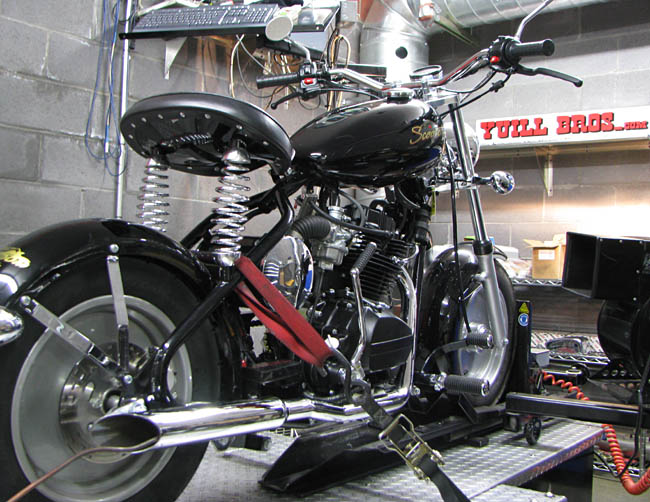
Steve sent a CSC Classic up to the Yuills with a simple directive to optimize its performance, and wow, did they ever! One of the first findings was that the bikes were geared way too low, so Steve changed the front and rear sprockets from a 17T/35T combination to a 16T/26T combination. That change alone resulted in a huge improvement in how the bikes feel…they are dramatically more relaxed, with a much smoother ride. The change basically dropped the engine speed about 1000 rpm in top gear. It’s a change we incorporated on all bikes.
There’s a lot going on in one of these dyno runs, so a bit of explanation is in order here. Each dyno run, like we mentioned above, evaluates three factors: Horsepower, torque, and the air/fuel mixture. Horsepower is a measure of the engine’s power. Torque is the engine’s “grunt” (it’s what we feel in the seat of our pants when we crack the throttle). The ideal air/fuel mix is 13.8 to 1, and we’d like that number to be met as closely as possible throughout the rpm range (it means the engine will run smoother, without being too lean or too rich).
The Yuills evaluated various combinations of needle settings, jetting, air cleaner type, exhaust pipe type, and (as mentioned above) gearing.
Here’s an early dyno run:
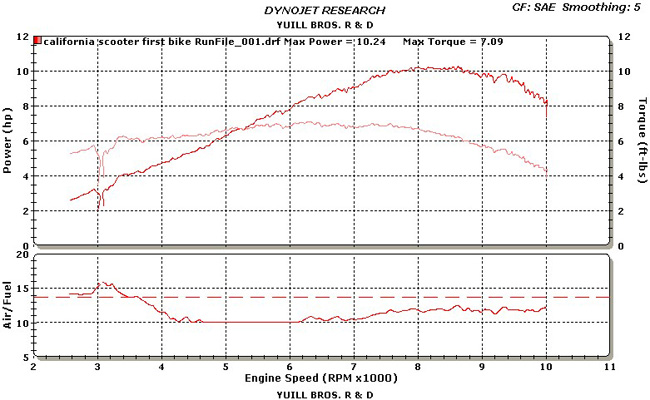
We can see in the above run that we attained 10.24 max horsepower, and the maximum torque is 7.09 ft-lb. Not bad, but not as good as it can be. We also see that the air/fuel mix does not adhere too closely to that ideal 13.8 ratio (that’s in the lower part of the chart).
Here’s another one where we get 10.77 horsepower, and a little more torque than the run above:
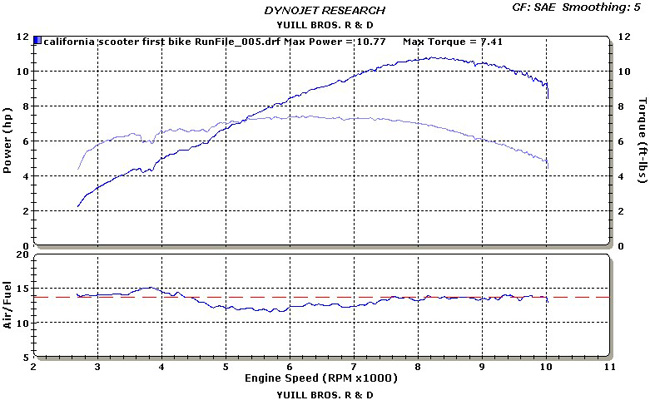
It’s better than the run above, and the idealized air/fuel mix is better (but still not right on the 13.8 line as closely as it could be).
Now, take a look at this run (which we really like)…
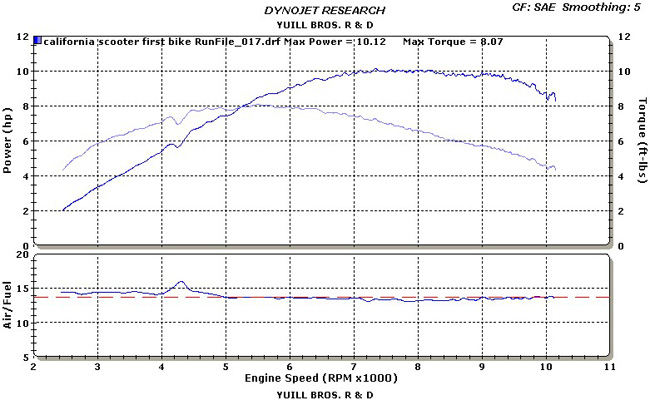
The torque is up to 8.07 ft-lbs, and that’s good news. Really good news, actually. Torque is what you feel when you crack the throttle. It’s what makes riding a big V-twin such a rush; you get that kick right now, down low, without having to wind the engine out to a zillion rpm like you do on the multicylinder sports bikes. And on this last run, notice how flat the torque curve is when it is at its maximum. That’s another good thing. It means that higher torque comes on sooner, and lasts longer.
You might be thinking wait a minute…I want more horsepower, and this last run is down a bit from the earlier runs. Well, yeah, it is. But that’s not the real story. Our bikes are geared to run about 5400 rpm at 50 mph. Take a look at the horsepower line for all three curves at that rpm. In our last run, at 5400 rpm (where we will be doing most of our riding) the horsepower is actually higher. That’s right – that last run gives us more power in the real world (at 5,400 rpm). Unless your real world consists of running around at 8,000 or 9,000 rpm, the dyno tells us that on the last run (with its much higher and broader torque band, more power at normal engine speeds, and an air/fuel mix staying close to 13.8 throughout the rpm range) we have a much better-performing motorcycle. And it is. You can feel it as soon as you let the clutch out.
Most of the time, if you want to extract the best performance from a motorcycle you have to buy dyno time and go through a number of runs evaluating gearing, jetting, exhaust systems, air filtering approaches, and other factors. (If you just start bolting on high performance parts without dyno testing, you usually lower the motorcycle’s performance.) The good news here is you won’t have to do this kind of testing with a CSC motorcycle. Courtesy of the Yuill brothers, we already have all of that information, and you can configure your bike with a CSC performance kit to tune it for the kind of riding you like.
This is really cool stuff. Dynamometer testing like this is usually only done on a few big V-twins and high performance sports bikes, and it’s not cheap. Most folks never do it. I’ve been around motorcycles since Moses crossed the Red Sea, and I’ve never seen it done on a small motorcycle. It’s yet another touch that makes these CSC motorcycles unique. To the Yuill boys up at Freedom Cycles, a tip of our helmets to you for a job well done!
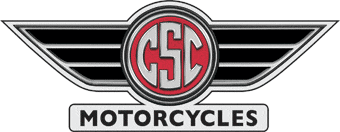
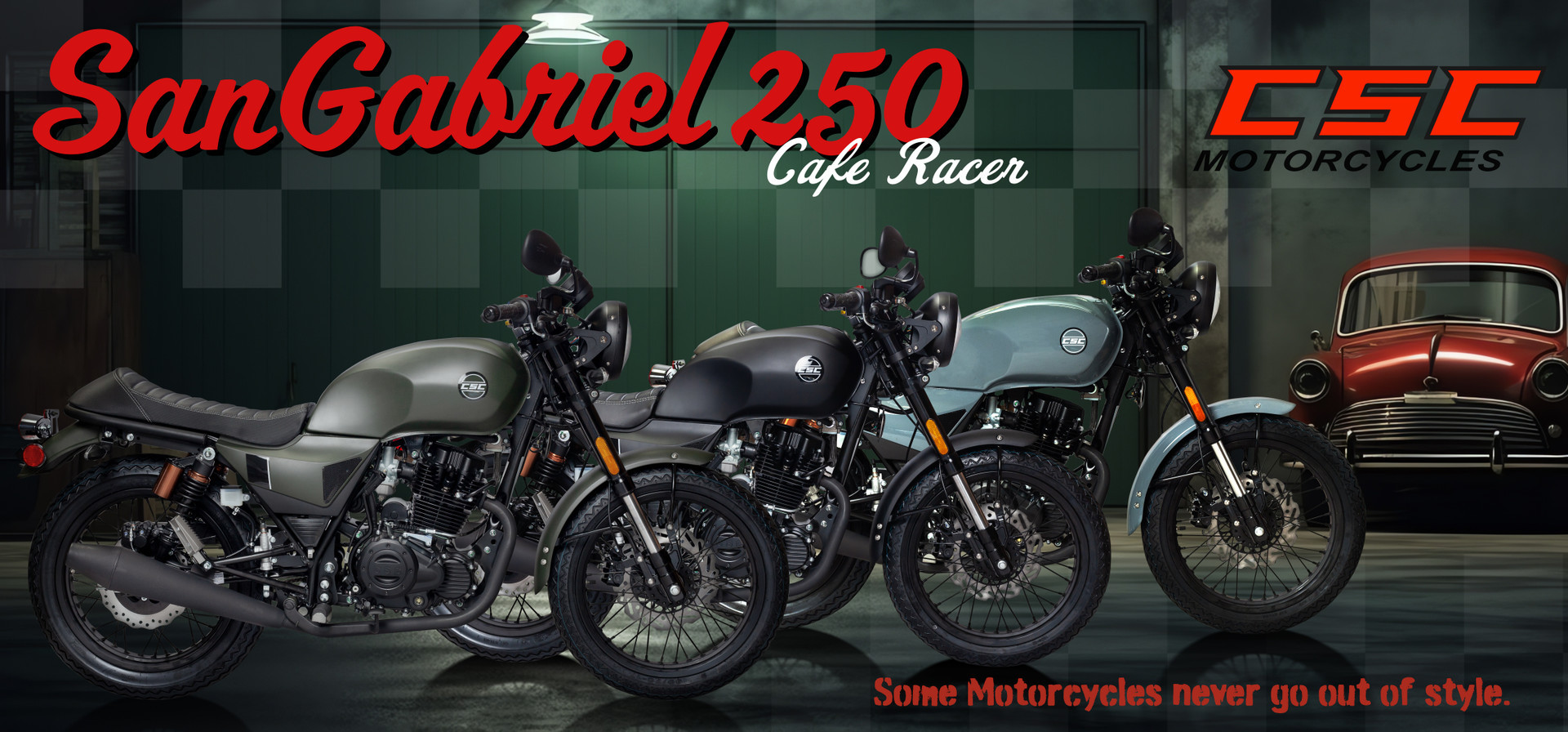
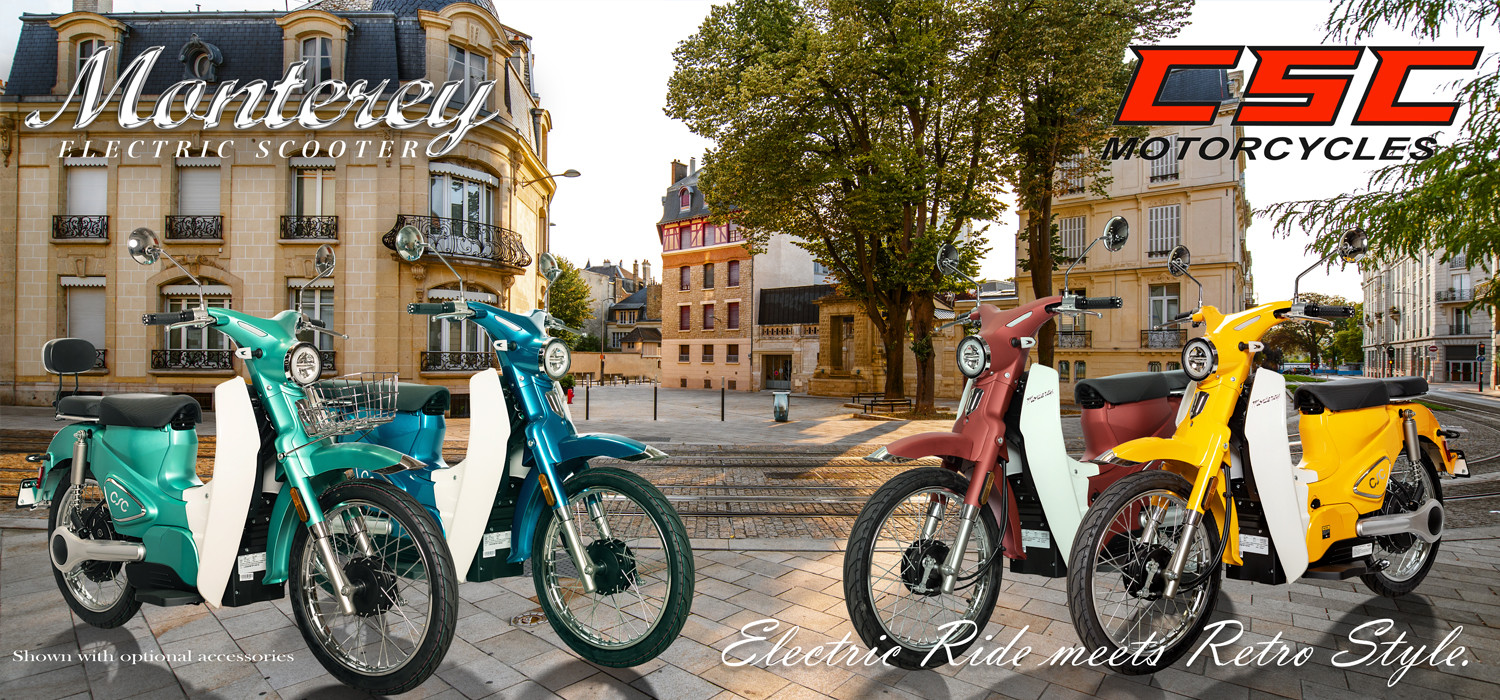
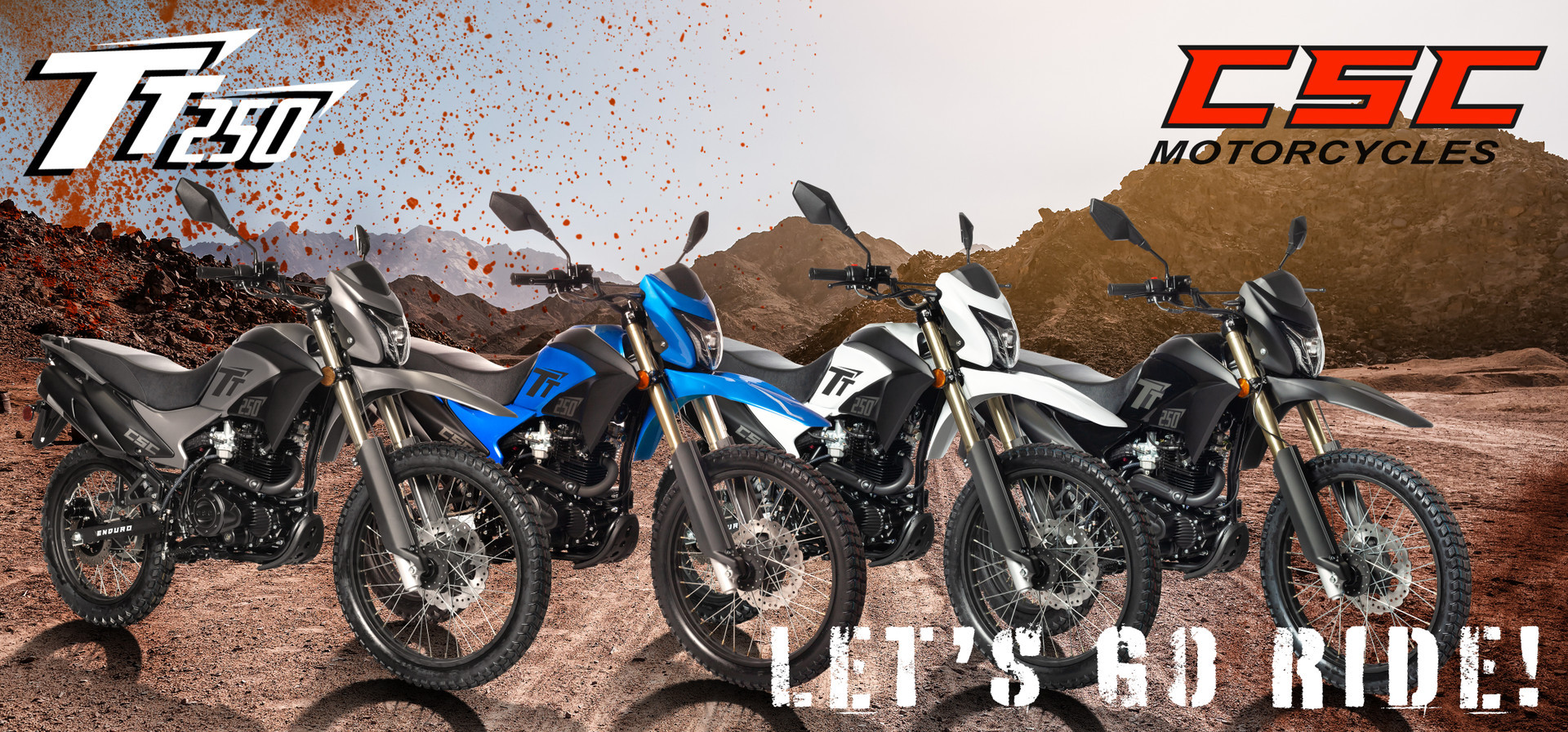
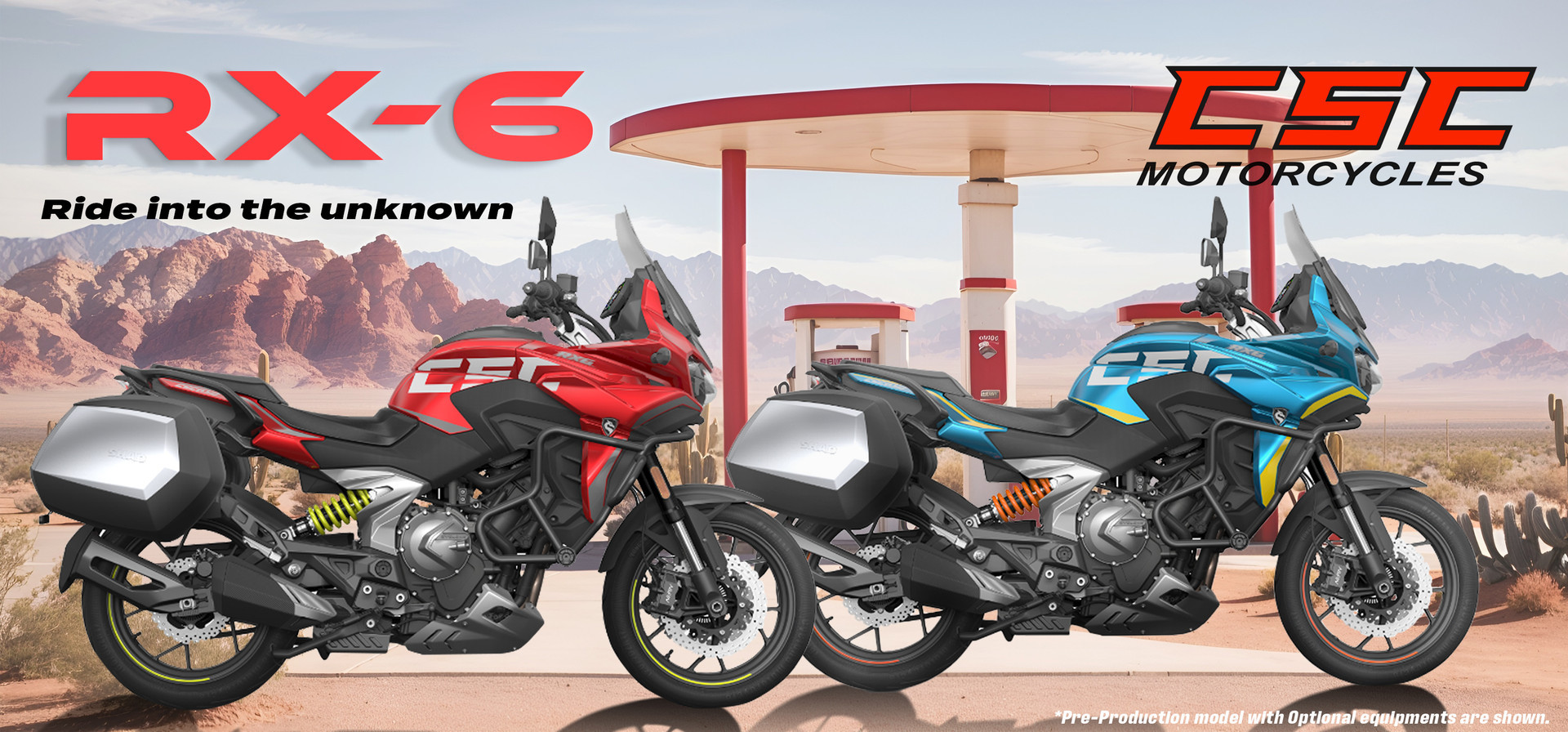
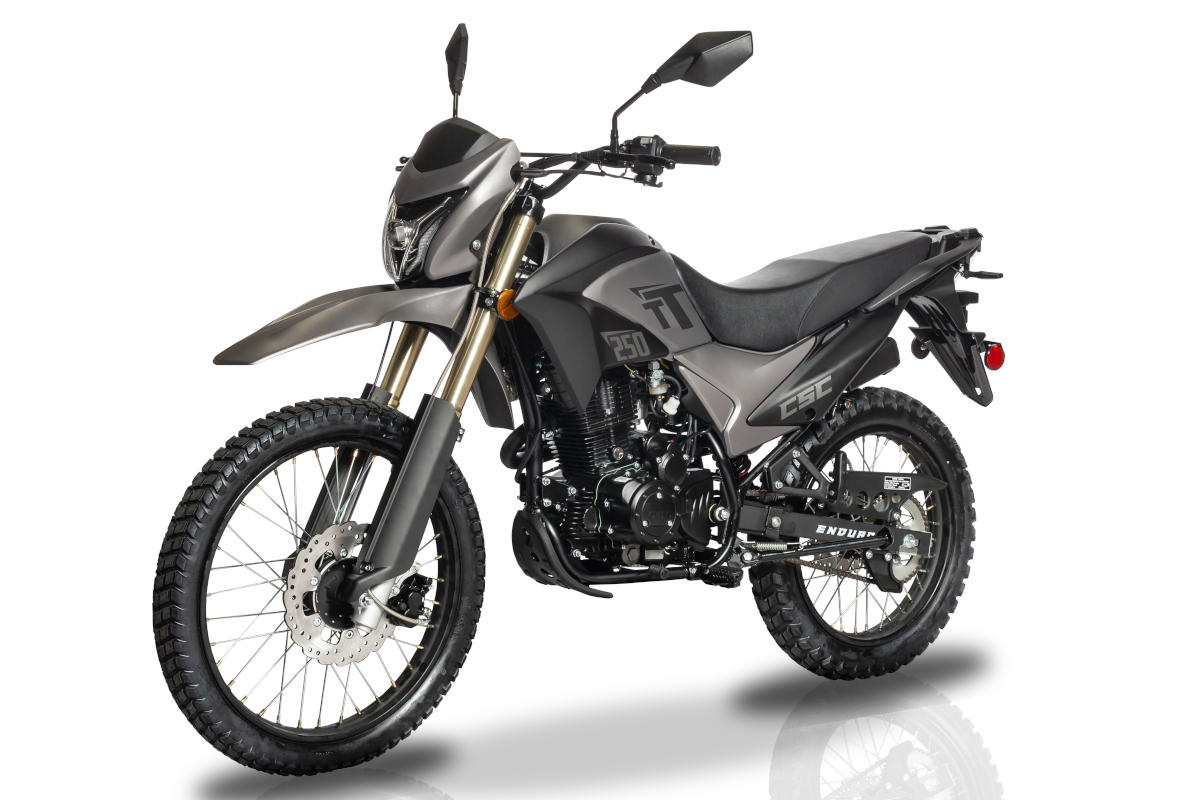 TT250 Enduro
TT250 Enduro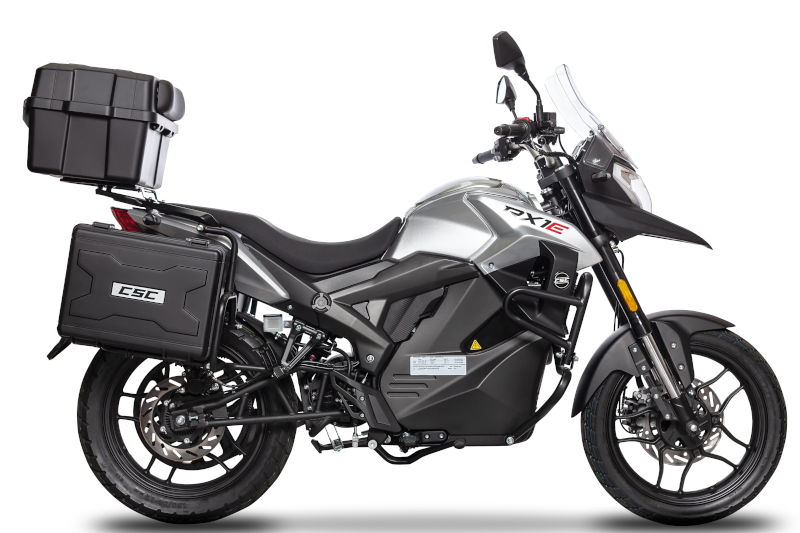 RX1E Electric Motorcycle
RX1E Electric Motorcycle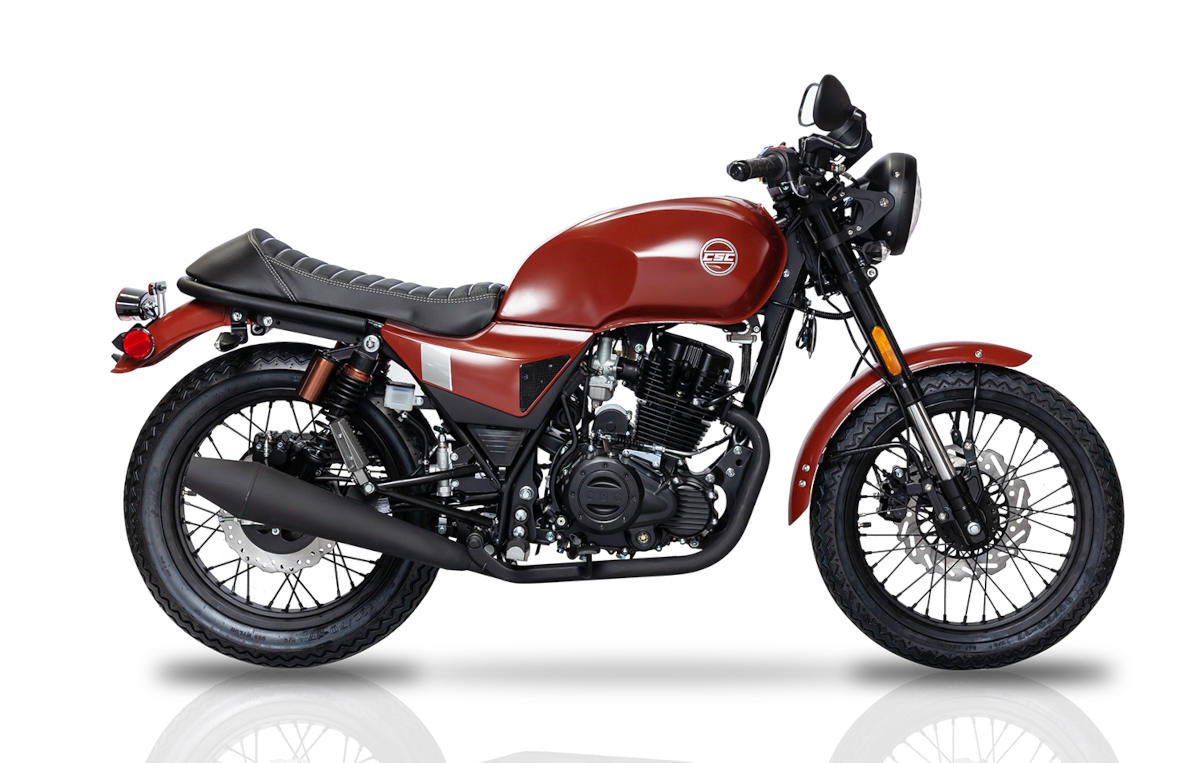 SG250 San Gabriel Cafe Racer
SG250 San Gabriel Cafe Racer
One Response to Forget the Oscars, the Reno Results Are In…